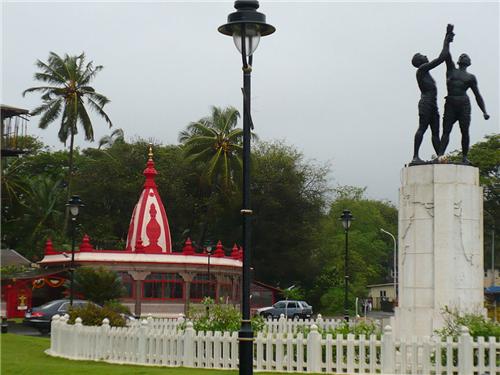At the end of the day, we have politicians and not statesmen. There is little talk about the future of a Goa we envisage

It's that time of the year when everyone remembers Goa's Statehood. We will hear a lot of platitudes about out State and its "progress" since 1987. We'll be reminded over reams of newspaper, and official statements, as to how much ground has been gained since. But it's not a level playing field.
The only ones doing all the remembering (and evaluating) are government sources and politicians. So, it's bound to be the case that only the "good" parts gets highlighted. What about the other side of the balance sheet? Is it possible to undertake a more citizen-centric evaluation of our past generation?
Goa is splurging many times more in its State budgets these days, we have droves of tourists coming in (still not enough) and there's so much more moolah (and some benefits of technology) going around. But, does this mean that we are necessarily doing better?
As a young journalist in my 20s in the 1980s, the first difference that struck me in those times was the bureaucracy-politician equation. This changed rather dramatically after 1987.
Till 1987, and Statehood, the bureaucracy played a key role in decisions taken at Panjim (or Panaji). Politicians were largely kept in check.
Bright, young and idealistic officers, who had recently passed their IAS exams, were dispatched to Goa. They mostly worked with dedication and commitment. I recall Shailaja Chandra sending out a file to understand the issue of falling school admissions. You could access statistics, forest figures, crime details, and much more, so much more easily.
If one wants to understand how things changed after 1987 and Statehood, one can simply look at three or four fields which are important to Goa. Its politics, its education, its environment and its ability to build a vision for Goa future and its youth.
For one, barely three years after Statehood, Goa's notoriety with defections and political instability broke forth. Did it have something to do with the magical figure of 40? Or, was it the grip of the real estate lobbies on State politics that actually fuelled this? Goa soon became synonymous with political instability.
This continued for much of the 1990s, and things did not improve after Parrikar ascended power (after knocking down his then own defector-ally Sardinha). Ironically enough, the situation did improve after 2005, when even a relatively lacklustre chief minister like Digambar Kamat managed to hold on to power uninterruptedly for the Congress. Despite the latter party facing a whole lot of pressures from the resurgent BJP then.
The BJP has been since able to fight off instability, and defections now have come to mean an wholesale influx into that party. This only underlines the suspicions that a party ruling Panaji is in trouble if it is different from the one ruling New Delhi!
Goa's journey in the field of education since 1987 has shown what a divided society ours since. After breaking heads on Konkani-versus-Marathi lines in the months preceding Statehood, both battling sides joined hands to fight English in the 1990s.
Those wasted years saw Marathi and Konkani gang up against English-medium primary schools. All this, in the name of pro-mother-tongue education. This only alienated more Goans from Konkani, weakened the relatively easier-to-access government-funded schools, and did nothing to stop the disinterest in Konkani and Marathi.
Now, with the New Education Policy of 2020 coming into play, it's left to be seen how the "local languages versus English" dilemma plays out. This was a missed opportunity for Goa to accept and acknowledge its own diversity.
This can be a strength, not a weakness. Goa's multiple language skills could be harnessed to move ahead, without losing our language moorings. But, using the excuse of 'mother tongue education', solutions which some politicians were in favour of were pushed down the throats of many. This could have not happened without the post-Statehood, 1990 ascendance of the PDF government experiment. That was, one would recall, a curious mix dominated by the likes of Shashikala Kakodkar and Churchill Alemao.
The environment has also taken a drubbing. It could be argued that this is connected with the enhanced power of the political class of Goa, since 1987. There has been no accompanying attempts by the citizenry to keep track of the changes being effected.
Land became a major source for political corruption. Changing a few plans and a few digits in the law could yield in huge political returns.
At the end of the day, we have politicians and not statesmen. There is little talk about the future of a Goa we envisage. There is no thinking been done about the future of the youth, who might get access to enhanced education in Goa (however job-oriented or not).
One thing strikes you about Goa's Statehood and its aftermath. It was something few had been demanding when it came about. Of course, there were some vague demands that were made ever since the 1960s for this (together with more vociferous claims to get Goa merged into Maharashtra, from others).
But, Statehood came as quite a surprise when it did.
In February 1987, the language battles were sorted out. This came about suddenly, through the passing of a controversial Bill, which only laid the seeds for further dividing Goan society. Some, like the writer Ashok Row Kavi, have seen the language row as basically a political battle, one for power and hegemony.
After it ended, in an interview with journalist Mario Cabral e Sa, the then brand-new and shining Prime Minister Rajiv Gandhi raised the issue of Goa getting its Statehood. It came faster than expected and quite surprisingly. And to what effect....